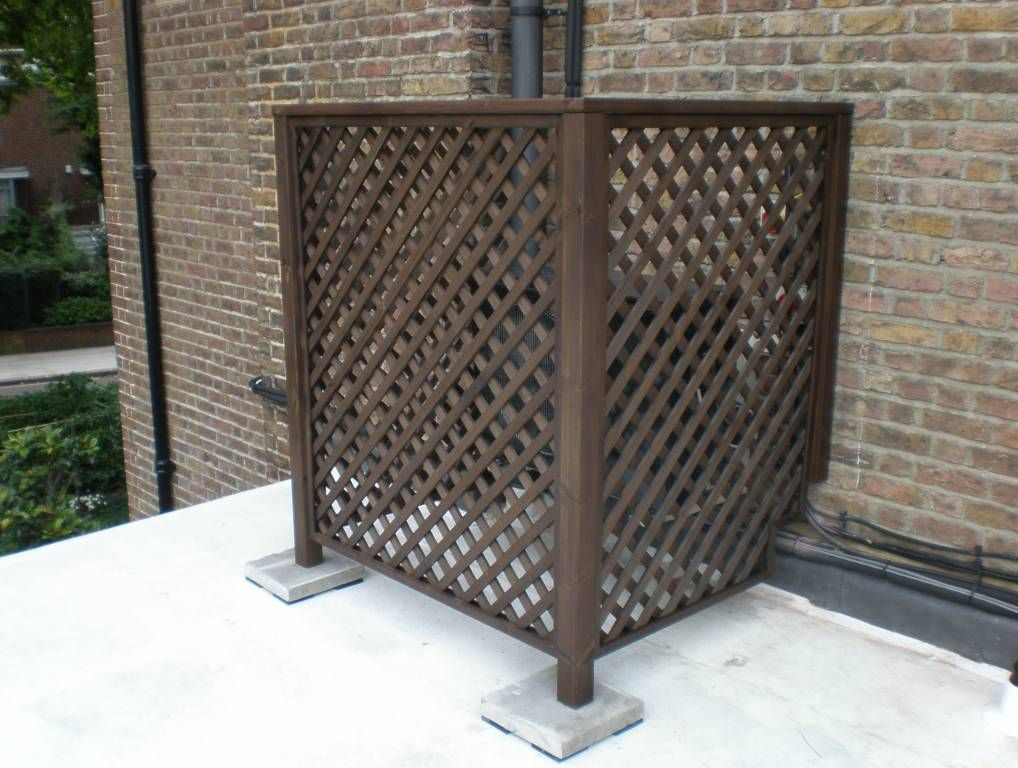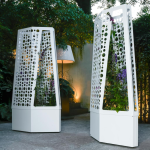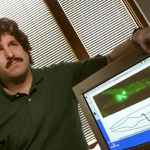Trellis Air cooling technology represents a groundbreaking advancement in energy-efficient air conditioning, designed to combat the rising temperatures exacerbated by climate change. Developed by a Harvard startup, this innovative cooling solution operates with remarkable efficiency, utilizing a membrane dehumidification method that mimics the function of a coffee filter. By significantly reducing energy consumption compared to traditional cooling systems, Trellis Air has the potential to drastically lower greenhouse gas emissions associated with air conditioning, which currently contribute to about 4% of global emissions. As global demand for cooling is projected to soar by 40% by 2030, the introduction of such cutting-edge technology is not just timely but essential for sustainable living. With a blend of scientific innovation and engineering prowess, Trellis Air aims to redefine how we think about climate control in the modern world.
The Trellis Air cooling mechanism is part of a new wave of innovative cooling solutions aimed at addressing the urgent challenges posed by climate change. This technology, which employs a unique membrane system, effectively enhances air quality by removing excess moisture while maintaining energy efficiency. Such advancements are crucial in an era where energy-efficient air conditioning is necessary to mitigate the impacts of rising global temperatures. The collaborative efforts of scientists and entrepreneurs, particularly from a notable Harvard startup, underscore the importance of developing eco-friendly technologies that can lead to significant reductions in greenhouse gas emissions. As society continues to grapple with climate-related issues, technologies like Trellis Air offer a beacon of hope for a more sustainable future.
The Rise of Innovative Cooling Solutions
As rising global temperatures become a pressing concern, the demand for more effective and sustainable cooling solutions has reached an all-time high. The traditional air conditioning systems, which rely heavily on vapor-compression technology, account for roughly 4 percent of global greenhouse gas emissions. This statistic is particularly alarming when considering that it surpasses the emissions from air travel. Consequently, a shift towards innovative cooling solutions is imperative, not only to meet the rising demand but also to combat climate change. Harvard’s Trellis Air is at the forefront of this movement, offering a game-changing alternative that aims to make significant reductions in energy consumption.
Innovative cooling solutions like those being developed by Trellis Air could potentially transform the landscape of air conditioning. The company utilizes advanced membrane dehumidification technology, which functions similarly to a coffee filter, to extract moisture from the air more efficiently. This approach significantly decreases the energy required for air conditioning without compromising performance, thus offering a viable path towards achieving greater sustainability and reducing greenhouse emissions in the sector.
Understanding Trellis Air Cooling Technology
Trellis Air cooling technology employs a unique membrane system that revolutionizes the process of drying and cooling air. Unlike conventional air conditioning systems that rely on refrigerants, which can have detrimental environmental impacts, Trellis Air’s innovative approach utilizes a special membrane to separate water vapor from the air. This method requires less energy while providing the same, if not better, cooling results. By introducing this technology into the market, Trellis Air not only addresses the increasing demand for cooling solutions but also helps mitigate climate change by reducing energy consumption and associated greenhouse gas emissions.
The cutting-edge membrane developed by Trellis Air is a product of extensive research and collaboration at Harvard University. This membrane is designed to be highly efficient yet durable, overcoming past limitations faced by membrane dehumidification systems. By combining advanced material science with practical engineering, Trellis Air is paving the way for a new standard in energy-efficient air conditioning systems. The implications of this technology are vast, presenting opportunities not only for residential applications but also for industrial use, further solidifying its promise as a leading solution in the fight against climate change.
The Role of Harvard’s Startup Ecosystem
The establishment of Trellis Air within Harvard’s vibrant startup ecosystem showcases the university’s commitment to fostering innovation that addresses global challenges. The collaboration between talented researchers and entrepreneurs has yielded remarkable advancements in cooling technology, emphasizing the importance of interdisciplinary approaches in tackling pressing environmental issues. With support from various institutions, such as the Wyss Institute and Harvard’s Office of Technology Development, Trellis Air has been able to leverage cutting-edge research and translate it into market-ready solutions.
Harvard’s startup ecosystem is crucial not only in nurturing innovative ideas but also in facilitating partnerships that enhance commercialization efforts. For Trellis Air, this means access to resources, funding, and a network of experts who can provide guidance and support throughout its development journey. By harnessing the power of academic research and entrepreneurial spirit, Harvard’s startups are poised to drive significant advancements in technologies designed to reduce greenhouse gas emissions and promote sustainability in everyday life.
Membrane Dehumidification: A Step Towards Sustainability
Membrane dehumidification represents a crucial advancement in the quest for sustainable cooling solutions. As conventional air conditioning systems struggle with energy inefficiencies and environmental impacts, Trellis Air’s innovative implementation of membrane dehumidification technology emerges as a beacon of hope. This process not only utilizes significantly less energy but also minimizes the harmful effects associated with traditional refrigerants, marking a pivotal step towards a cleaner, greener future.
Furthermore, membrane dehumidification can dramatically lower operating costs for building cooling systems. By tapping into advanced materials science, the processes developed by Trellis Air allow for easier water extraction while maintaining high levels of efficiency in air conditioning systems. This innovative approach exemplifies the potential of advanced technologies to reshape energy-intensive industries and drastically lower their carbon footprints, thus supporting global initiatives to reduce greenhouse gas emissions.
Replace Traditional Systems with Low-Emission Alternatives
The urgent need to replace traditional air conditioning systems with low-emission alternatives has never been clearer. As global temperatures rise, and energy demands soar, it is essential to transition to more energy-efficient air conditioning technologies that challenge the status quo. Trellis Air has positioned itself as a frontrunner in this transformation, providing innovative solutions that not only reduce energy consumption but also address the increasing climate crisis.
By integrating Trellis Air cooling technology into existing air conditioning systems, businesses and homeowners can expect substantial reductions in energy costs and greenhouse gas emissions. This shift represents not just a financial incentive but a responsible choice toward sustainable development. Embracing low-emission cooling systems is a vital step forward in the fight against climate change, ensuring a healthier planet for future generations.
Addressing the Energy Consumption Crisis
With air conditioning demand projected to rise by 40 percent by 2030, the potential for increased energy consumption presents a significant crisis that must be addressed urgently. Traditional cooling systems are not designed to accommodate this surge in demand with efficiency, leading to higher energy costs and exacerbating greenhouse gas emissions. This critical situation calls for innovative responses from companies like Trellis Air, which are dedicated to transforming the cooling landscape through their groundbreaking technologies.
Trellis Air’s focus on reducing energy consumption through advanced membrane technology presents a promising solution to this impending crisis. Their approach not only lessens the energy load on buildings but also contributes to lowering the overall environmental impact associated with air conditioning. As more consumers and organizations seek sustainable alternatives, the success of Trellis Air represents a significant leap toward solving the energy consumption crisis and securing a healthier future for our planet.
The Impact of Energy-Efficient Air Conditioning
Energy-efficient air conditioning solutions are crucial in mitigating climate change and reducing overall greenhouse gas emissions. The increased usage of cooling systems has been associated with escalating energy consumption, which poses dire implications for the environment. By adopting energy-efficient technologies such as those from Trellis Air, individuals and businesses can play a significant role in minimizing their carbon footprints while enjoying the benefits of effective cooling.
Moreover, the economic advantages of energy-efficient systems cannot be understated. Lower energy bills and reduced reliance on fossil fuel power sources will not only contribute to cost savings for consumers but also pave the way for a more sustainable energy future. The innovation displayed by Trellis Air in developing its unique cooling technology sets a benchmark for the industry, demonstrating that significant advancements in energy efficiency are not just possible, but within reach.
Collaboration Between Experts in Engineering and Science
The collaboration between engineering experts and scientific researchers is critical in fostering innovations like those seen at Trellis Air. By merging disciplines such as architecture, materials science, and environmental engineering, the startup has cultivated an environment ripe for breakthroughs in cooling technologies. This interdisciplinary approach not only enhances the development process but also ensures that the solutions created are robust, efficient, and designed to address complex real-world challenges.
Such collaborative efforts have led to the creation of advanced materials and unique designs that enhance the efficiency of dehumidification processes. The Trellis Air team includes leading scholars and experienced professionals who have come together to redefine the standards of cooling technology. Their dedication to leveraging the best of both science and engineering exemplifies how teamwork across disciplines can yield impactful solutions that meet the pressing needs of a warming world.
Future Prospects of Cooling Technology
The future of cooling technology looks promising, particularly with the ongoing innovations driven by startups like Trellis Air. As climate challenges become more pronounced, the demand for efficient cooling solutions will likely continue to grow. This creates an opportunity for businesses that prioritize sustainability and energy efficiency to thrive in emerging markets. The Trellis Air model demonstrates that innovative technologies can significantly reduce energy consumption and environmental impacts while offering superior performance.
Potential pathways for scaling the Trellis Air technology include integrating it with existing HVAC systems, providing retrofitting options for older buildings, and developing completely new, energy-efficient cooling systems tailored to modern architectural needs. Such advancements signify that the future of air conditioning will not only focus on maintaining comfortable indoor climates but will also prioritize ecological responsibility. Ultimately, companies like Trellis Air are paving the way for a future where cooling technologies coexist harmoniously with environmental sustainability.
Frequently Asked Questions
What is Trellis Air cooling technology and how does it work?
Trellis Air cooling technology employs an innovative membrane dehumidification method that functions similarly to a coffee filter, effectively drying and cooling air more efficiently than traditional systems. This Harvard startup aims to significantly reduce energy consumption in air conditioning systems, mitigating greenhouse gas emissions associated with conventional cooling methods.
How does Trellis Air’s membrane dehumidification differ from traditional air conditioning?
Unlike traditional air conditioning that relies on refrigerants and consumes a large amount of energy to cool air and remove humidity, Trellis Air’s membrane dehumidification utilizes a unique membrane to selectively extract moisture from the air with less energy. This third approach improves efficiency by minimizing heat production and reducing the overall energy footprint of cooling systems.
What impact does Trellis Air cooling technology have on greenhouse gas emissions?
By reducing the amount of energy required for air conditioning, Trellis Air cooling technology can significantly lower greenhouse gas emissions associated with traditional cooling systems. Given that air conditioning contributes approximately 4 percent of global emissions, this innovative solution represents a crucial step towards tackling climate change and reducing environmental impact.
Can Trellis Air’s technology be integrated into existing air conditioning systems?
Yes, Trellis Air is developing its technology as a ‘pre-drying module’ that can be integrated into existing air conditioning systems, enhancing their efficiency and lowering energy consumption. This approach allows for upgrading traditional cooling solutions without requiring complete system overhauls.
Who is behind the development of Trellis Air cooling technology?
Trellis Air was founded by a team of researchers and entrepreneurs from Harvard University, including Jonathan Grinham, Jack Alvarenga, and Joanna Aizenberg. Their collaborative efforts have led to the advancement of membrane dehumidification technology aimed at creating more sustainable cooling solutions.
What are the potential applications of Trellis Air cooling technology?
Trellis Air cooling technology has a variety of potential applications, including replacing inefficient desiccant systems in industrial settings, upgrading household dehumidifiers, and providing innovative cooling solutions for commercial air conditioning needs. This could transform the future of energy-efficient air conditioning.
How does Trellis Air help address the rising demand for cooling due to climate change?
As global temperatures rise and the demand for cooling is projected to increase by up to 40 percent by 2030, Trellis Air’s innovative cooling technology offers a solution by providing a more energy-efficient alternative to conventional AC systems, thereby reducing the strain on energy resources and mitigating climate change effects.
What makes Trellis Air’s membrane unique compared to other dehumidification systems?
Trellis Air’s membrane is uniquely engineered to achieve high water selectivity and durability, allowing it to effectively separate water vapor from air while maintaining a compact and efficient design. This innovative approach not only enhances performance but also outperforms traditional dehumidification technologies.
How effective is the testing of Trellis Air cooling technology in real-world conditions?
Trellis Air has conducted extensive field studies in challenging climates, including Miami’s hot and humid conditions and Boston’s summers. These tests confirm the technology’s efficiency and practicality, showcasing its potential to significantly reduce energy consumption and emissions in real-world applications.
What support has Trellis Air received in its development?
Trellis Air has garnered support from Harvard’s Office of Technology Development, funding from the U.S. Department of Energy, and assistance from the Wyss Institute for Biologically Inspired Engineering, all of which have facilitated the research and commercial advancement of its pioneering cooling technology.
| Key Point | Details |
|---|---|
| Trellis Air Technology | Innovative air conditioning solution utilizing a unique membrane to efficiently dry and cool air. |
| Environmental Impact | Conventional cooling systems contribute to about 4% of global greenhouse gas emissions, projected to rise due to increased demand. |
| Innovative Approach | Unlike traditional systems, Trellis Air’s method operates similarly to a coffee filter to extract moisture, consuming significantly less energy. |
| Collaboration | Developed by a team at Harvard, incorporating expertise from various fields, ensuring a robust scientific foundation. |
| Commercial Potential | Trellis Air aims to integrate its technology into both industrial and residential cooling systems, potentially revolutionizing the market. |
Summary
Trellis Air cooling technology represents a groundbreaking advancement in air conditioning aimed at addressing the rising demand for more efficient cooling solutions amid global climate challenges. By utilizing a novel membrane that operates much like a coffee filter, Trellis Air significantly reduces energy consumption associated with traditional cooling methods. This innovative solution is not only poised to mitigate the considerable greenhouse gas emissions linked to conventional air conditioners but also offers a promising path forward for sustainable and efficient cooling systems in response to the increasing global temperatures.








